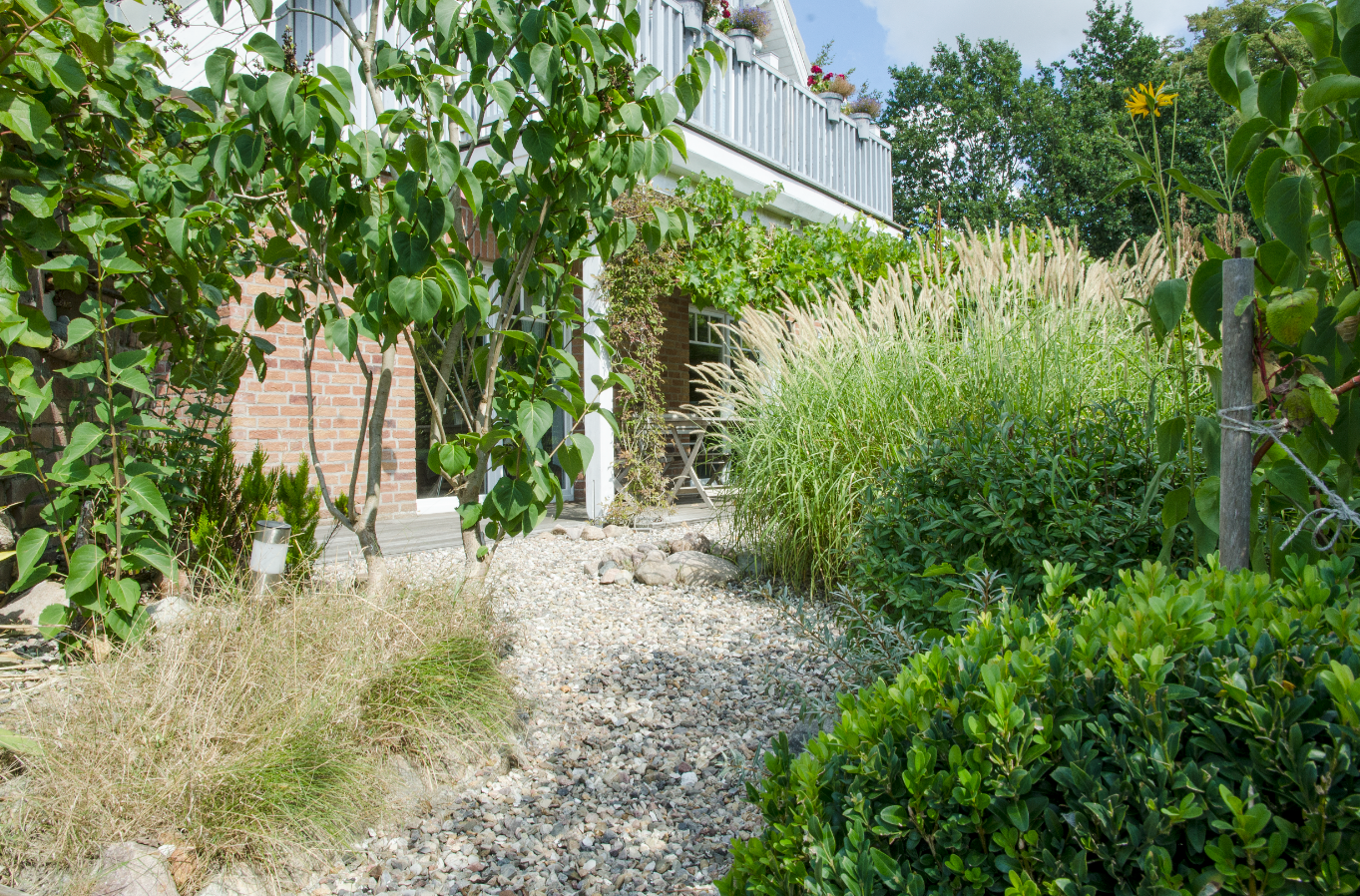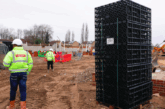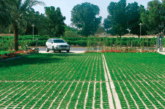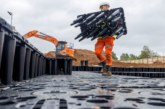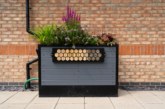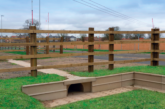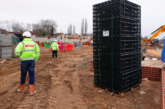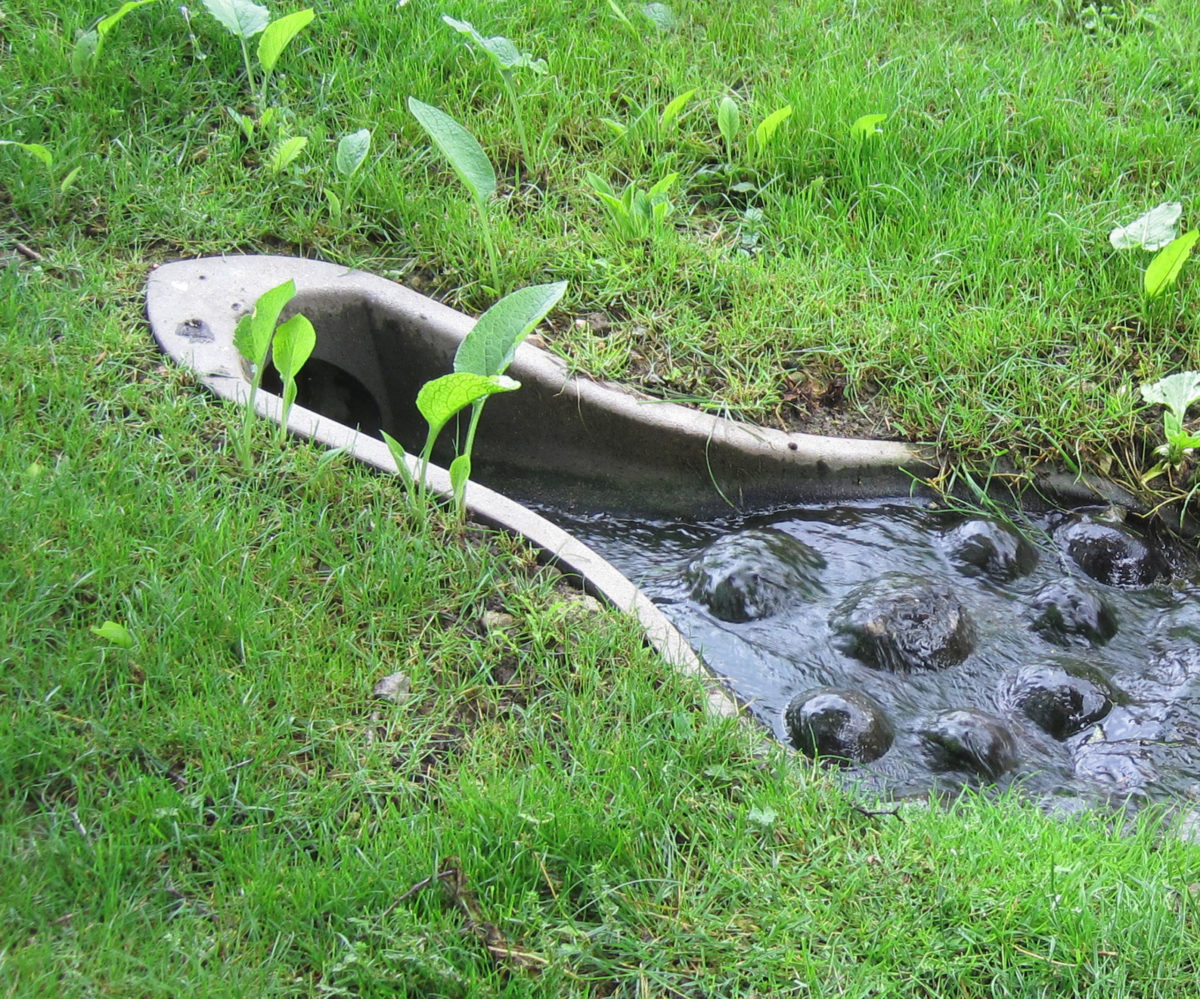
Few landscaping schemes can be considered in isolation from SuDS these days. Sam Hawkins, national specification manager at ACO Water Management, explains what housebuilders and developers need to know before Schedule 3 – the legal arm of SuDS – is implemented.
Beginning next year, sustainable drainage systems (SuDS) are likely to be mandatory for housebuilders and developers. Because of this, changes will need to be made to the way projects are planned and delivered.
Soon to be made mandatory in England, provided the parliamentary schedule and timing of the next General Election allows, Schedule 3 means all new residential developments except single dwellings must incorporate SuDS. This also includes any other scheme over 100sqm. The goal behind this change is to reduce the risk of flooding and improving the management of water runoff while improving water quality and enhancing biodiversity.
It is important that housebuilders and developers are aware of the new regulations and start planning their drainage accordingly. They need to ensure compliance in order to avoid delays or penalties in the construction process, as well as to be able to hand over the sites to local authorities once building work is complete.
Achieving SuDS
By taking into consideration design elements and consultations with different stakeholders, including planning authorities and manufacturers, it is possible to achieve SuDS that enable better outcomes for people, the environment and the planet.
New rules, especially those enforced by law, can appear complicated at first, so let’s divide SuDS into three significant phases. At each phase, it is important to understand the flow of water:
- The roof – what happens when water hits the roof? In what way is the flow managed and what products are used or required?
- The surface – what happens when water leaves the roof and lands on the next surface? Should the rainwater be treated and stored? How is it directed through the development?
- Leaving – how is water finding its way to natural water courses? How is it being reused for the benefit of local biodiversity?
It’s necessary to begin thinking in this way to anticipate potential circumstances where water may depart from expected routes. You need to be ready to answer the question: what will happen downstream if the design fails?
Consulting with SuDS specialists early on is an increasingly important part of planning. With Schedule 3’s implementation, developers can no longer think only in terms of removing water off site as quickly as possible or about maximising building space without leaving room for appropriate catchment, storage and treatment techniques.
What now to prepare?
Becoming familiar with available SuDS solutions will help housebuilders and developers prepare for the coming changes. As an example, the ACO SuDS Swale Inlet can be an ideal solution for linking drainage systems to features such as swales, ponds and water courses. The more information gained about solutions and how to best apply them will place housebuilders and developers in a good position, ready for the implementation of Schedule 3. Another way to prepare is by consulting with drainage engineers and solutions providers now, to help establish the right SuDS choices for their developments.
It is a good idea to consider the drainage requirements of the development as part of initial site surveying, and what options would suit the location, as opposed to leaving these decisions later. By following this course, it means that SuDS will be given sufficient attention and made part of the development from the very beginning.
Similarly important is the need for teams to be educated on the benefit of SuDS. When everyone on a project understands how and why SuDS should be incorporated, systems are more likely to be implemented properly while meeting Schedule 3 regulations.
In the end, making SuDS a part of a development can not only benefit the environment but also enhance the value and appeal of properties to potential buyers or renters. Reducing the risk of flooding, improving water quality, enhancing biodiversity and creating more sustainable housing developments are just some of the benefits of well executed SuDS.
For SuDS that include green, nature-based solutions like swales, tree pits and attenuation ponds, there is the additional gain in reducing ongoing maintenance costs.
Prior to work commencing, all SuDS installations must be approved by a SuDS approval body (SAB) who will also define the mechanism to manage and maintain the SuDS on developments once completed.
Parting thoughts
There is still time to become familiarised with the changing rules and available solutions. As guidelines continue to be established, it is best to begin now to prepare for the implementation of Schedule 3 and the impact it will have on many projects from 2024 and beyond.
For more on ACO’s sustainable drainage consulting and solutions, visit www.rdr.link/xxx

